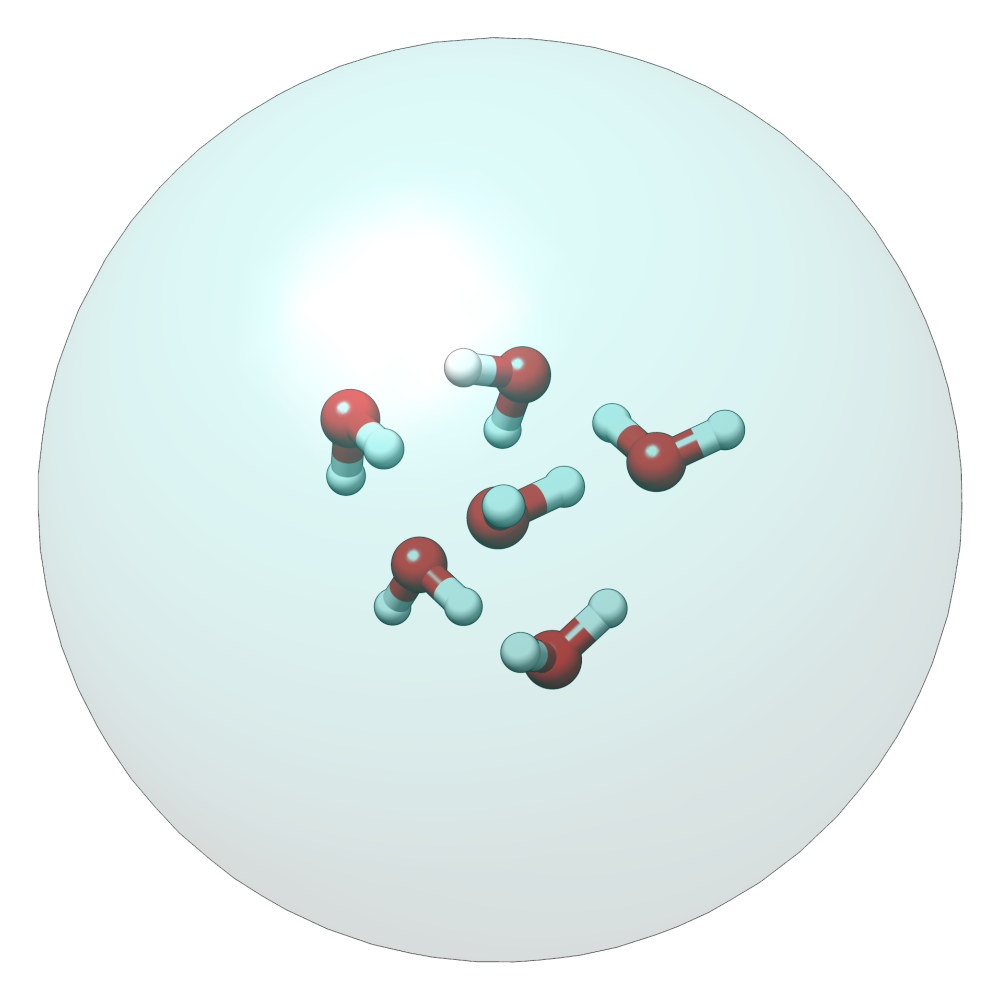NCI Conformational Sampling
A conformational search with CREST’s NCI mode for non-covalent systems.
Sampling of non-covalent complexes and aggregates (NCI mode)
A specialized application of CREST is the sampling of aggregates (also referred to as NCI mode). The idea here is to find different conformations of non-covalently bound complexes in which the arrangement of the fragments is of interest. The application can be called by:
crest struc.xyz --nci
18
O -1.469470 0.057971 1.425525
H -0.584285 0.519331 1.484152
H -1.949531 0.297378 2.218248
O -0.414388 -2.005083 -0.137355
H -0.827334 -1.527314 0.598606
H -0.829507 -1.642295 -0.927593
O -1.740922 0.293387 -1.291566
H -2.429374 0.885495 -1.595601
H -1.784260 0.283934 -0.315678
O 2.037846 -0.900550 -0.123510
H 2.719638 -1.557770 -0.261948
H 1.180681 -1.385350 -0.122605
O 0.833144 1.402993 -1.296134
H 1.432120 0.648938 -1.204997
H -0.044502 1.022356 -1.465271
O 0.879327 1.214234 1.389828
H 0.853406 1.590056 0.483434
H 1.511729 0.488538 1.308001
The procedure and output is essentially the same as a normal CREST conformational search, but with reduced settings (less MTDs, adjusted MTD bias parameters). What is different, however, is that first an ellipsoid wall potential is created and added to the simulation. A nice example for this application are small molecular clusters, e.g. (H2O)6. The ellipsoid potential that is automatically determined for the input cluster is visualized in the figure below.

Maximization of the RMSD, and hence a minimization of the MTD bias potential would simply ead to a dissociation of the NCI complex after a few picoseconds in the MTD. Hence, the ellipsoid potential is required in the MTDs to counteract the bias potential. In the subsequent geometry optimization, however, the surrounding potential must not be present due to the absence of the MTD bias potential and the structure would be artificially compressed by the ellipsoid. Therefore it is automatically removed in the geometry optimization steps.
--wscal <REAL>. Other options that apply for conformational search settings may also be applied. See the Keyword Documentation .In general, the task of finding new low lying aggregates is more challenging than finding (only) conformers, since each fragment of the complex could also have several different low lying conformations. For the H2O)6 cluster, 3 examples are shown in the figure below. Note that all three structures are also part of the well-established WATER27 benchmark set, but were generated automatically by CREST from a single input structure. In total 69 different clusters were found of which only 3 are shown.
